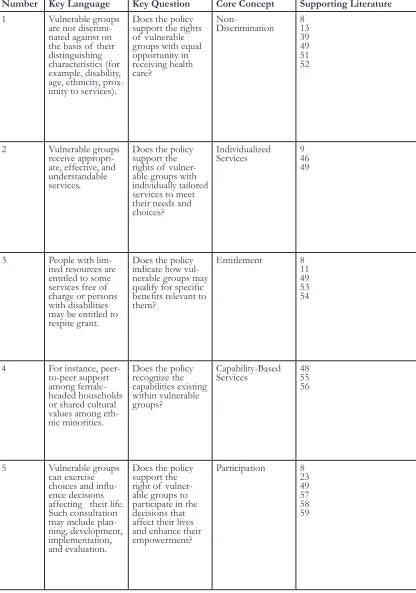EquiFrame: A framework for analysis of the inclusion of human rights and vulnerable groups in health policies
Full text
Figure




Related documents
These data, the first to examine several critical aspects of how providers experience, view and make decisions about unconventional reproductive arrangements, sug- gest that
on deeply held misconceptions and fears of people who hold different beliefs, strategies of conceptual change theory, most often found in science education, were
The crime scene sketch is the simplest and most effective method of recording the positions of physical evidence, the placement of objects within an area, the physical dimensions
Research Question #2: Do the Vietnamese students and the Mexican students articulate differing perceptions of what teachers expect of their academic
The national health priority areas are disease prevention, mitigation and control; health education, promotion, environmental health and nutrition; governance, coord-
Table 1 Implementation and Imp rovement Scienc e Proposal Evaluation Criteria (Con tinued) Criteria Score 01 2 3 • Unclear implementat ion strategies are not theoretically
The scattergram represents the distribution with age of 69 determinations of concentration of potassium in serum of 39 premature infants with respiratory distress syndrome (Table

